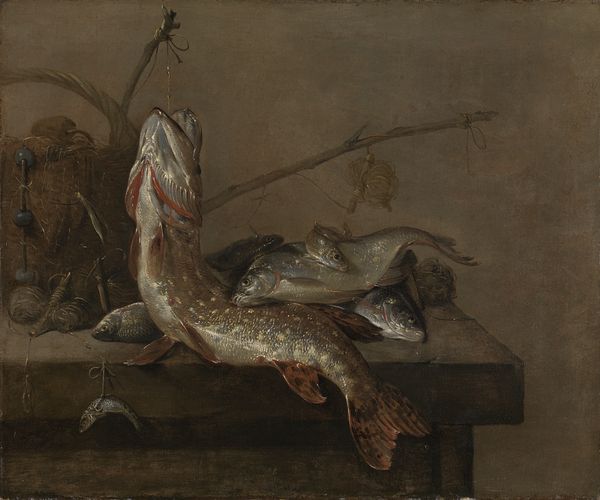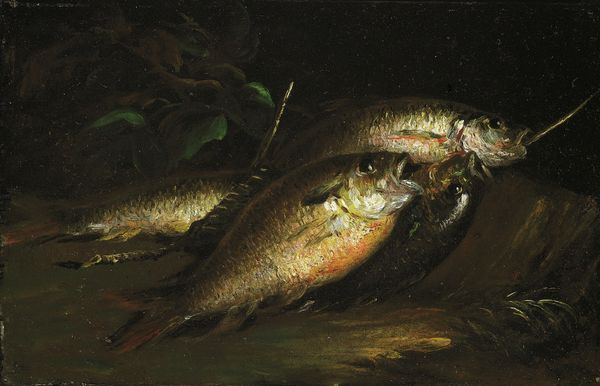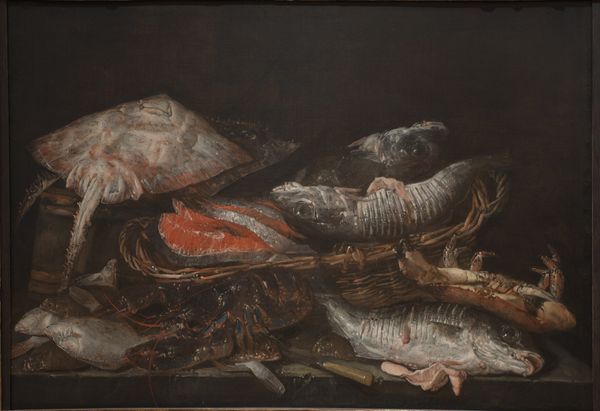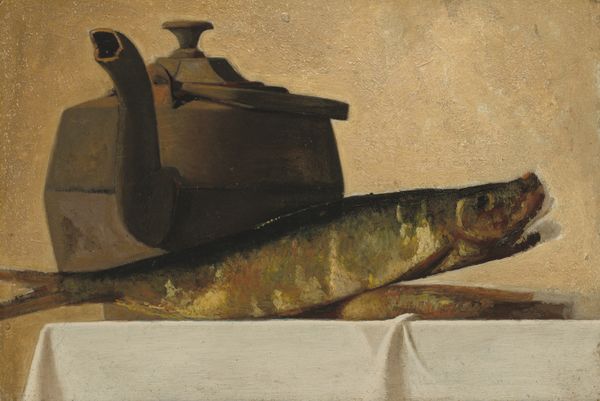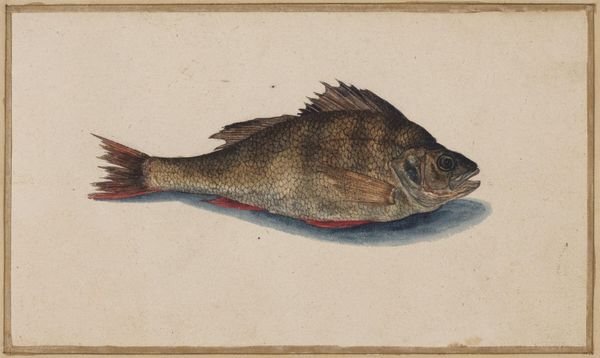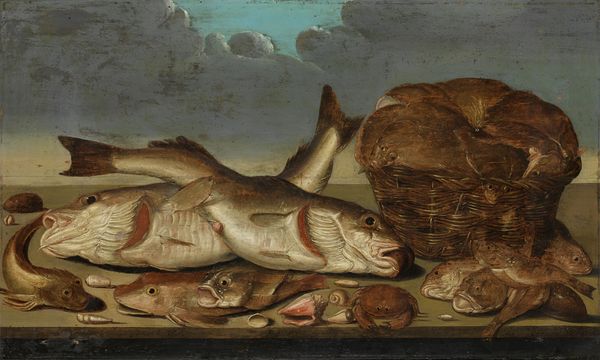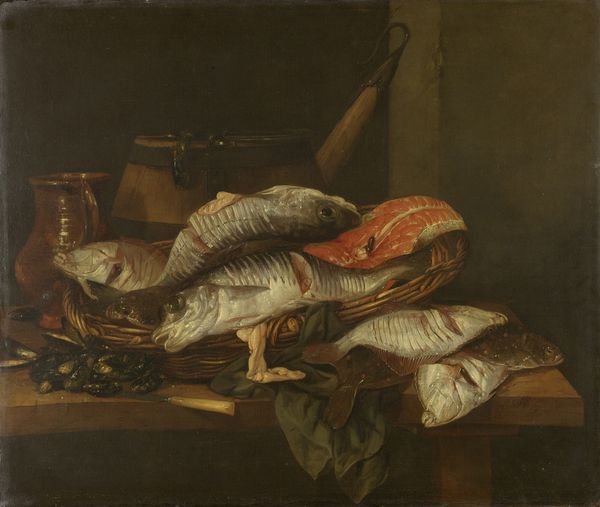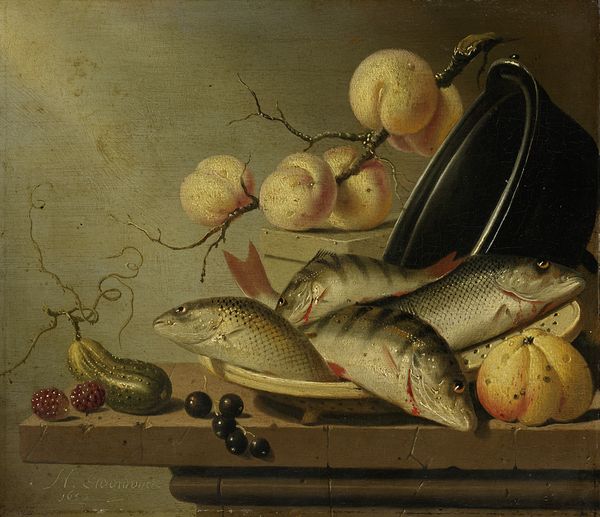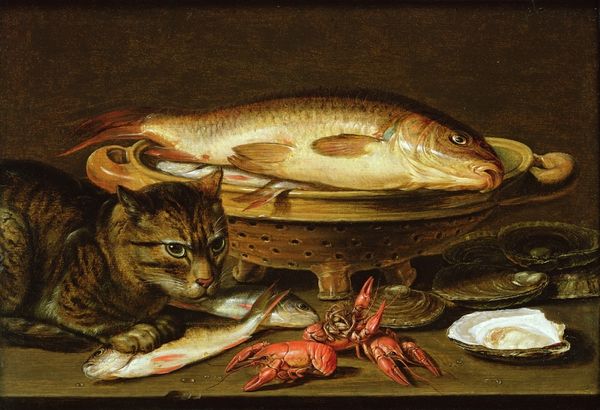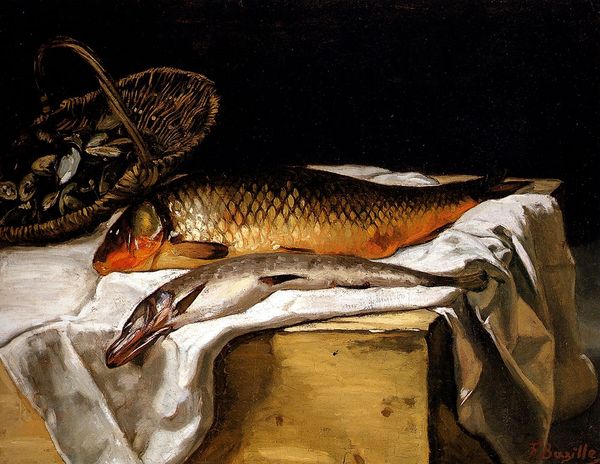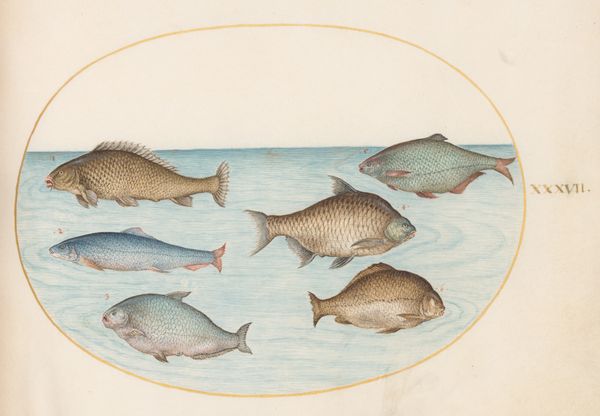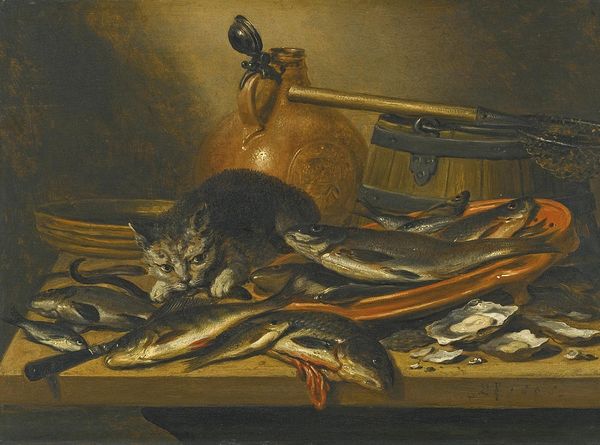
oil-paint
#
dutch-golden-age
#
oil-paint
#
genre-painting
#
realism
Dimensions: height 65.6 cm, width 78.9 cm, thickness 3.8 cm, depth 9.5 cm
Copyright: Rijks Museum: Open Domain
Curator: Looking at this grouping of aquatic life, I immediately notice how realistically Pieter van Noort depicts the textures—the scales, the nets. Editor: Realism, indeed. It's almost disconcerting how bluntly these fish are presented. There’s a stillness and coolness, literally and figuratively. The gray palette dominates, yet notice how subtly the light catches the fish's bodies? Curator: Painted sometime between 1648 and 1672, “Still Life with Fish” really exemplifies genre painting that developed so strongly in the Dutch Golden Age. These weren’t just pretty arrangements, they spoke to the cultural values and economy of the time. Fish represented abundance, the Netherlands' close relationship to water, and the everyday life of many people. Editor: You mention abundance, but I see the transience, too. The stillness feels morbid. They've been caught, presented...destined to be consumed. Even that fishing rod in the background becomes symbolic— a reminder of human intervention in nature's course. And it makes the overall composition more of a "memento mori". Curator: It’s that tension between appreciating life’s bounty and acknowledging its ephemerality, though I see it more as celebrating what is harvested than lamenting what is lost. Fish, in that era, carried different meanings as a central, sustaining force within their cultural framework. They also had religious symbolism for protection and faith. The humble arrangement contains deeper layers of societal connection. Editor: While that's true, I return to those subdued colors and the artist’s choice to spotlight texture above all else. Look at the way the rough net contrasts the fish scales. And the somber background puts everything on display. The focus isn’t really on celebration but, the meticulous detail with which van Noort displays these everyday items forces me to contemplate deeper things, even if he never explicitly said that was his intention. Curator: It reminds me how art objects gain relevance, both consciously and unconsciously, that continue over time to convey ideas about life that resonate differently. Editor: And it’s through understanding both the symbolism and the artfulness of the application, together, that makes a piece like this still resonate with us now.
Comments
No comments
Be the first to comment and join the conversation on the ultimate creative platform.
